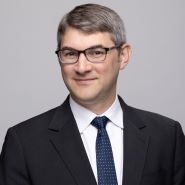Intended Use and Anticipation: A Lesson
- March 9, 2012
- Blog Post
Associated People
A recent Board of Patent Appeals and Interferences (BPAI) decision, Ex parte TAEYONG YOON (Appeal 2010-000843, in application serial no. 11/408,722, decision issued March 7, 2012), for which the Final Rejection was affirmed, provides an exemplary warning against drafting claims in such a way that features recited in the claims are not given full patentable weight.
Claim 1 of the 11/408,722 application (herein ‘722 application) is directed to a bulk erase tool which comprised “a second polarity main erase bottom magnet having a first polarity bottom cancel magnet at a portion thereof, said first polarity top and bottom cancel magnets and said second polarity top and bottom cancel magnetsfor reducing the bulk erase tool field strength at said first portion of said bulk erase tool.”
In the Final rejection, the Examiner cited Serizawa (U.S. Pat. No. 6,594,099) as anticipating the claimed features under 35 U.S.C. §102(a). In the Appeal Brief, the Applicant argued that this reference failed to disclose the claimed features including that the first polarity top and bottom cancel magnets and said second polarity top and bottom cancel magnets were for reducing the bulk erase tool field strength at said first portion of said bulk erase tool.
In the BPAI Final decision, the Board found that the phrase “for reducing the bulk erase tool field strength at said first portion of said bulk erase tool” recited in independent
Claim 1 was a statement of intended use. The Board further found that “a statement of intended use cannot distinguish over a prior art apparatus that discloses all the recited limitations and is capable of performing the recited function,” citing In re Schreiber, 128
F.3d 1473, 1477 (Fed. Cir. 1997) and Boehringer Ingelheim Vetmedica, Inc. v. Schering-Plough Corp., 320 F.3d 1339, 1345 (Fed. Cir. 2003) as providing support for this finding.
Interestingly, the Board went on to state that “Appellant claims a bulk erase tool….[however] no function of the bulk erase tool or any portion thereof is recited,” leaving open the possibility that the function of “reducing the bulk erase tool field strength at said first portion of said bulk erase tool” could have been claimed in such a way that it would not have been viewed as intended use. For instance, if the claim had recited that the first polarity top and bottom cancel magnets and said second polarity top and bottom cancel magnets were positioned such that the bulk erase tool field strength at said first portion of said bulk erase tool was reduced, this may have been enough for the board to find that this feature should be given weight.
A lesson to be learned from this BPAI decision is that claims should be carefully drafted to avoid a finding of intended use, especially when functional features are involved. For instance, use of the term “for” in a non-means plus function apparatus claim should be carefully considered, as this term may result in certain features of the claim not being provided full patentable weight.










 Counseling & Strategic Advice
Counseling & Strategic Advice IP Transactions
IP Transactions Litigation
Litigation PTAB Proceedings
PTAB Proceedings Start-Up
Start-Up Technology Transfer
Technology Transfer Trademark & Designs
Trademark & Designs U.S. Patent Procurement (Application Drafting & Prosecution)
U.S. Patent Procurement (Application Drafting & Prosecution)








